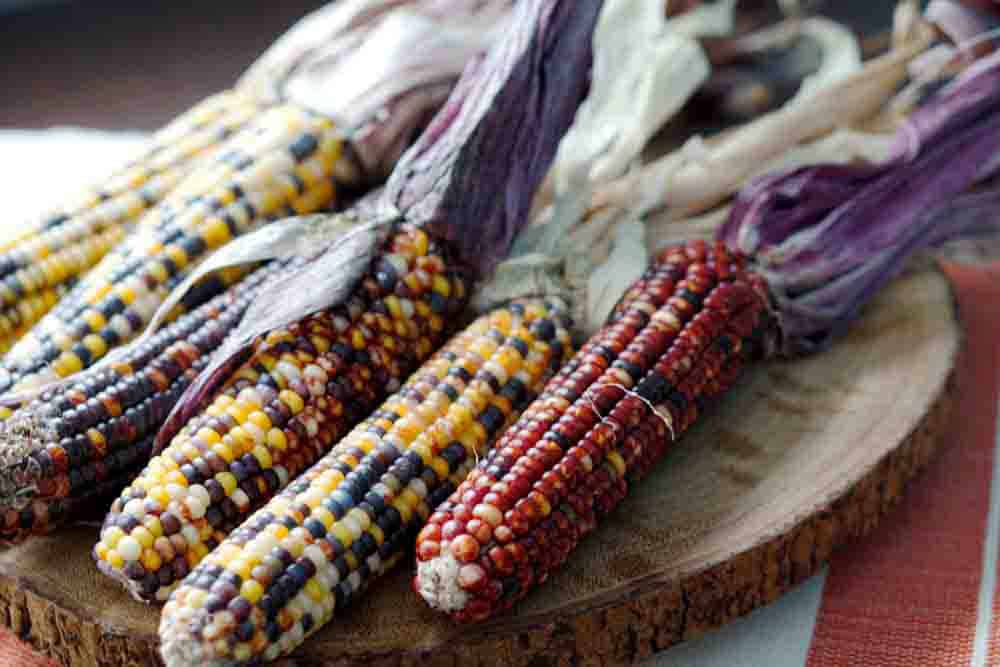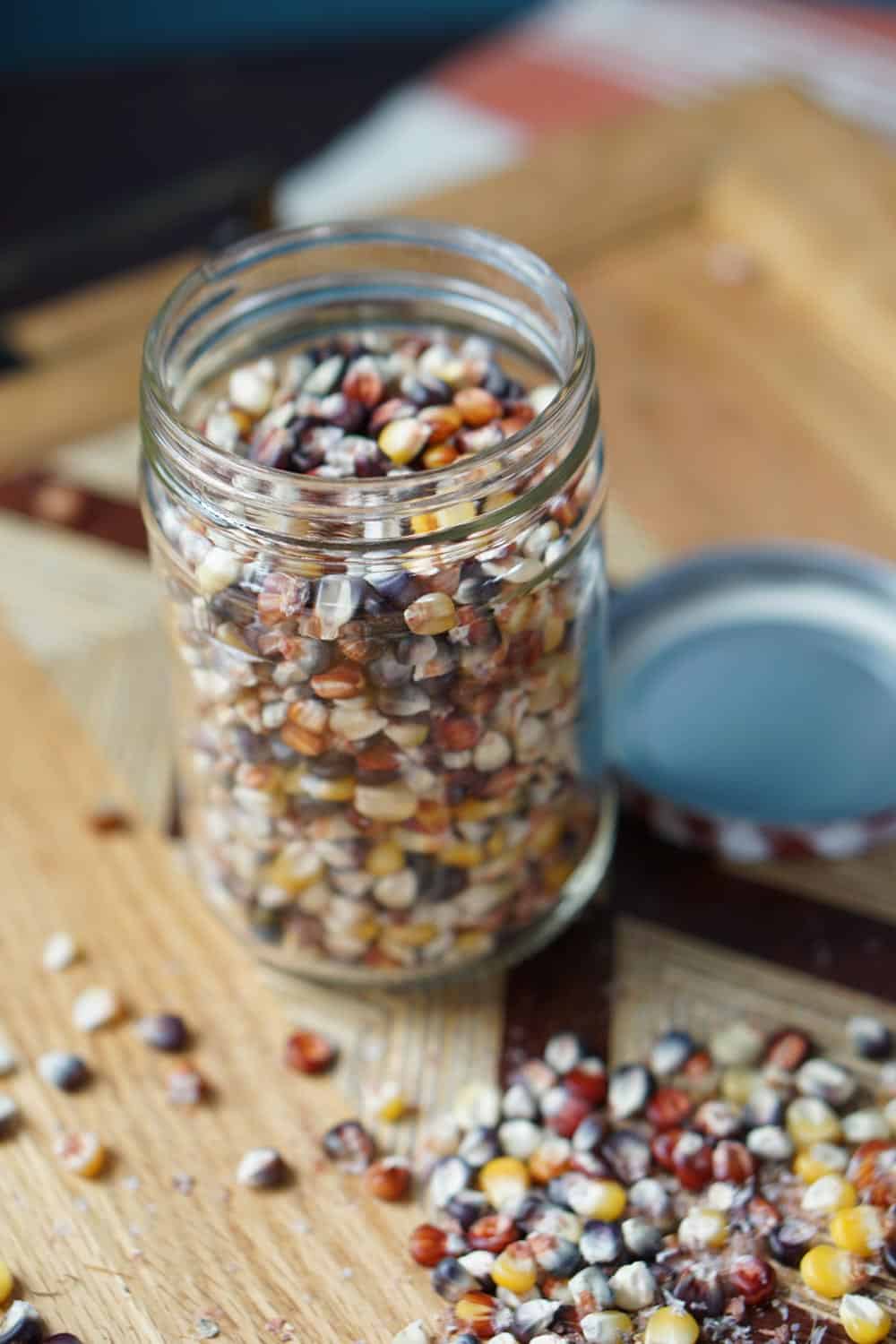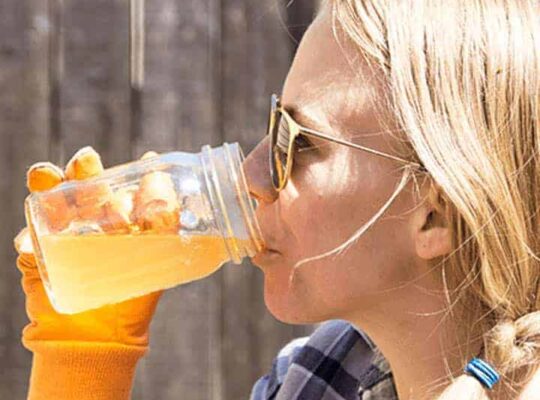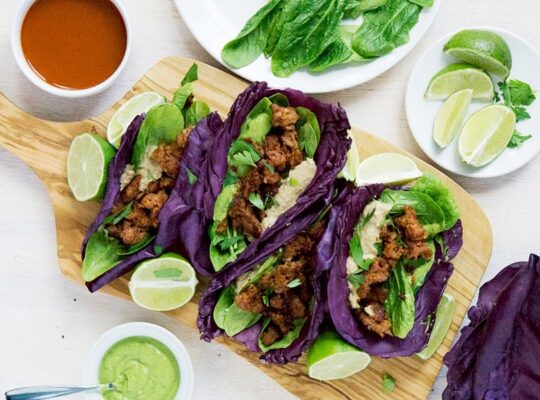 If like me after Thanksgiving you find yourself wondering: Can you eat Indian Corn? And if not, why is it on our table? Then, you’re in luck! Read how to harvest and grind that colorful decorative corn into flour, to use it as popcorn, and how it evolved into Modern Sweet Corn.
If like me after Thanksgiving you find yourself wondering: Can you eat Indian Corn? And if not, why is it on our table? Then, you’re in luck! Read how to harvest and grind that colorful decorative corn into flour, to use it as popcorn, and how it evolved into Modern Sweet Corn.
The cornucopia on our thanksgiving table always has these colorful, ornamental corn cobs. Blue, orange, yellow and black kernels poke out among the gourds, mini pumpkins and fall leaves. We never ate them as kids. They were considered ornamental, decorative.
But isn’t it weird to have food we don’t eat in the middle of the table, surrounded by food we do eat, to celebrate a day in history when people got together to share food because some of those people didn’t have enough to eat?
I thought so, too.
Last year I started using my decorative corn as it was intended: food.

A corn by any other name
Often referred to as ornamental or decorative corn, it is also called Flint Corn, Indian corn or Calico corn. The cobs are known for being beautifully colorful and hard as flint.
We named it after the Native Americans, but it was growing in China, South America and India for centuries before we “discovered” it. This corn is one of 3 types originally harvested by Native Americans and there’s evidence of corn cultivation as early as 1000 BC in what is now North America.
They apparently were originally one color per stalk (blue, red, white), but we bred different strains together to create one stalk with multiple colors in the last 50 years or so.
So can you eat Indian Corn?
They are indeed edible. And in fact, a lot closer to the natural corn that used to grow in the great plains than the sweet corn we see today.

Calico Corn (Indian Corn) vs today’s Sweet Corn
The transition to modern corn started 10,000 years ago in Central America with selective breeding, which is basically choosing the seeds of the corn you like best and replanting that next year. That artificially selects your preferred corn to be more successful. This could be corn with better texture, color, or with higher yields.
Traditional corn is harvested in late stage when the seeds are dry (dent stage) and used like a grain to make flour.
We humans transitioned from traditional corn to modern corn by selectively breeding for sweeter strands. The corn is sweeter because the sugar doesn’t convert to starch as well due to a recessive trait. Since the sugars don;t convert to starch, the corn will spoil faster. That is why modern corn is harvested before the dry stage, known as the milk stage.
Sweet corn has about 3 grams of sugar per medium ear of corn whereas regular corn had only 1 gram of sugar per ear of corn.
You can find more nutritional information from Nutrition and You, including the ferulic acid content which can be preventative against cancer.
How to Use Indian Corn?
The corn seeds need to be chucked or “popped” from the corn cob itself. Then they can be used directly for popping or ground to make masa.
Then the masa, or corn meal, can be used for a great variety of dishes including grits, polenta, masa cakes, tamales, papusas or gorditas. Basically, anything you would use normal corn flour from the store for you can use your fresh ground Indian Masa corn for.

The fresh ground Indian Masa Corn is better than Masa
First, it has an earthier and richer taste. Your gorditas and masa cakes will be so much more flavorful than just buying the masa at the store.
Second, calico or indian corn is typically not GMO and there’s a smaller chance of you coming into contact with glyphosate.
How do I “Pop” the Indian Corn Kernels from their Cob?
The drier the corn, the easier this will work. When the corn dries, the kernels peel away slightly from the cob. This is their natural process so they can release the kernels to grow new corn stalks.

- Make sure you have a bowl or tray underneath your work space as the kernels tend to pop everywhere.
- Place your thumbs along a row of kernels and press outwards.
- The kernels will release and “pop” out from the cob and into the bowl/tray table.
- Once you release all the kernels, sift out the stuck pieces of stalk and you are ready!
- You just harvested Indian corn kernels!
You can now make heirloom popcorn or grind your own Masa!
Here’s a short video on how to pop corn kernels out of Calico or Indian corn:
How to make popcorn with Indian Corn
You can use the Indian Corn kernels to make popcorn. You can also store them in a sealed mason jar to make popcorn or masa at a later date.
- I prefer to make popcorn on the stove top and the multi-colored Indian corn works great!
- Start by just covering the bottom of a pan in oil. I used olive oil or avocado oil, but avocado is better because of its higher smoke point. Avoid Canola oil.
- Add one-three corn kernels and heat the oiled skillet until the corn pops
- Then add the rest of the kernels (just barely fill the bottom of the pan, the kernels shouldn’t layer over each other) and cover until you stop hearing the popping sound. This takes about 4-5 minutes, just like a bag in the microwave.
Curious if popcorn is allowed on the Ketogenic Diet? Find out Here.
How do I grind the Indian Corn into flour?
You don’t need a mill. You can grind flour with what you have in your kitchen right now!
Back when my Mom and I had the bakery Grain Free Planet, we would grind our own flours. This flour grinding started out small in our kitchen before eventually growing to the point we needed a mill. We made flours out of baked white beans and black beans because the ones on the market weren’t cooked before turned into flour (which doesn’t allow the protective phyto-nutrients that give beans their names to denature into digestible pieces).

So when we were experimenting with recipe creations, we got very used to grinding our own flours at home.
The best tool for this?
You don’t need anything fancy. A standard run of the mill Coffee Grinder will work just fine. I love to use my handy-dandy Magic Bullet Blender
, simply because it allows for more volume.
- Take your sifted Indian Corn Kernels and toss ’em in the grinder.
- Then grind until smooth.
We usually would stop, mix the corn dust around, and then pulse again. This helped grind everything more evenly. After several rotations of stirring and grinding, the corn meal is the consistency of flour. It should only take 3-5 minutes.
Doing this at home, the corn meal will be a little grittier than store-bought masa. This adds more texture to the dishes you create and won’t be a problem in the cooked product.
For Grits, do not grind the corn into a full corn meal. You want the pieces of corn kernel to be larger to get the right consistency for grits. Just pulse the corn a few times until the kernels are broken up into chunks but not into flour. The easiest way to do this is change the setting of your Coffee Grinder to “coarse” and it will end up the consistency of grits.
If you do this a lot, Kitchen Aid makes an attachment to do this for you much quicker -> KitchenAid All Metal Grain Mill Attachment
Sharing is Caring! Pin to Pinterest for later or for your friends to find!









how cbd and thc work
[email protected]
So I finally tried the stove top method for popping our “decorative” corn cobs today and… It didn’t work 😭. A few of the kernels popped but most of them just split and that was it! I was really shocked because I waited a full two months for the cobs to dry before getting the kernels off. I used coconut oil – the same I use for popping regular popcorn with consistently good results at a ratio of 1/3 cup oil to 1 cup corn kernels.
Could it be there was just too much oil? Corn still not dried enough?? Any help would be very appreciated.
Can you eat Indian corn right off the cob? We planted corn in our backyard, and some of it ( nice and lucky for us!) is turning out to be multi-colored! We have never grown this before, so am wanting to know ! Thank us so much
Candie
Hi Alicia –
You can use “Pickling Lime” that you find in the canning section of the supermarket or feed store. Ms. Wages brand is usually found in most Walmart stores and sometimes Tractor Supply’s and Ace Hardware stores by the canning jars. I also see pickling lime in generic bags by the dried corn husks and dried peppers in the Mexican food section of Walmart from time, to time.
There’s also a way to bake, baking soda, at a certain temperature for a certain period of time that you can use to nixtamalize. Baking the baking soda changes the chemical composition of it. You can find videos on youtube…
It’s not hard to nixtamalize, it just takes preparation a day in advance. Once you have gone through the process, you can use it to make masa, or dry the nixtamalized corn to grind for grits or cornmeal / cornflour, or fry it fresh in butter with a little ham for hominy.
If you eat too much dent or flint corn without nixtamalization, you can develop a disease/disorder called “Pellegra”…
Isn’t it crazy all the things we don’t know about the basic things we eat (=
I think your article was great and thank you for taking the time to write it.
Have a safe Memorial Weekend!
Lots of great information here Alicia. It would have been great for you to explain your own positionality in relation to the story you have posted. That’s a respectful way to share information that is not your own. Even though you have learned this, it is Indigenous knowledge and should be acknowledged as such. Otherwise cultures are just erased over time. Not saying this to shame you in anyway, just as a learning point.
I am an Mohawk corn grower in what is called Canada today. I want to point out an important piece of eating this corn is called nixtamalization, (not needed for popcorn). Nixtamalization is the scientific word for it, my people call it lyeing the corn.
There are several ways to do this, but the one I know is to use ash from a hard wood fire. It softens and removes the hull of the corn, increases calcium and makes the nutrients bioavailable in the system. It can then be used in soups such as a three sisters soup or we make something called corn soup specifically, cooked with maple syrup, or my mom’s favourite but so not healthy, fried in butter with salt and pepper! We also make a boiled bread with beans in it! It’s so versatile. You can also grind it from this stage to make tortillas, rather than making a flour then adding the water. It increases the corn gluten, if that’s the right term or not I’m not sure, but the stuff that makes it hold together.
Corn is a sacred food for so many Indigenous nations around the world. I do appreciate you shedding some light on being able to eat the corn so many have adored every Thanksgiving, as you mentioned, but at best maybe fed to the birds or composted when done.
Hi Nikki and thank you for your comment. I really appreciate your perspective and this information. I’m also very sorry that I didn’t do a better job of recognizing and including the indigenous origins of this method. I will update this post to acknowledge the indigenous origins of this information as well as look for indigenous authors who write about this in more detail that I can reference. I’ll also be more conscious and aware of that in my further posts.
I have read about in nixtamalization and know that it’s better for digestion and processing the corn her grading included here because I haven’t tried it myself personally. My biggest hurdle is finding the natural wood ash or lime to do that with. I was a little nervous about the of powdered bag of lime that I could find out online and I don’t have a way to make wood ash myself. Give any recommendations on how to get that would ash? And does it matter what type of wood?
And you are right about my intentions with this post. I hope to see more of this traditional type of corn on people’s plates instead of just as decoration and then in the trash. Again thank you for your readership and for the time it took you to respond to this post with your comment.
I’m an organic farmer and was looking through corn info as I supply my local food banks with organic produce I grow because I love growing and I donate all my crops to the community except what I sustain myself with.
It’s a great way to do good things and a great thing to dream about in the winter.
Thank you for sharing your dream and visions. I loved this so much
Wopila Tanka
I love that you are supplying local food banks with fresh organic foods! Thank you for what you do!
I’m usually to blogging and i really appreciate your content. The article has actually peaks my interest. I am going to bookmark your site and keep checking for new information.